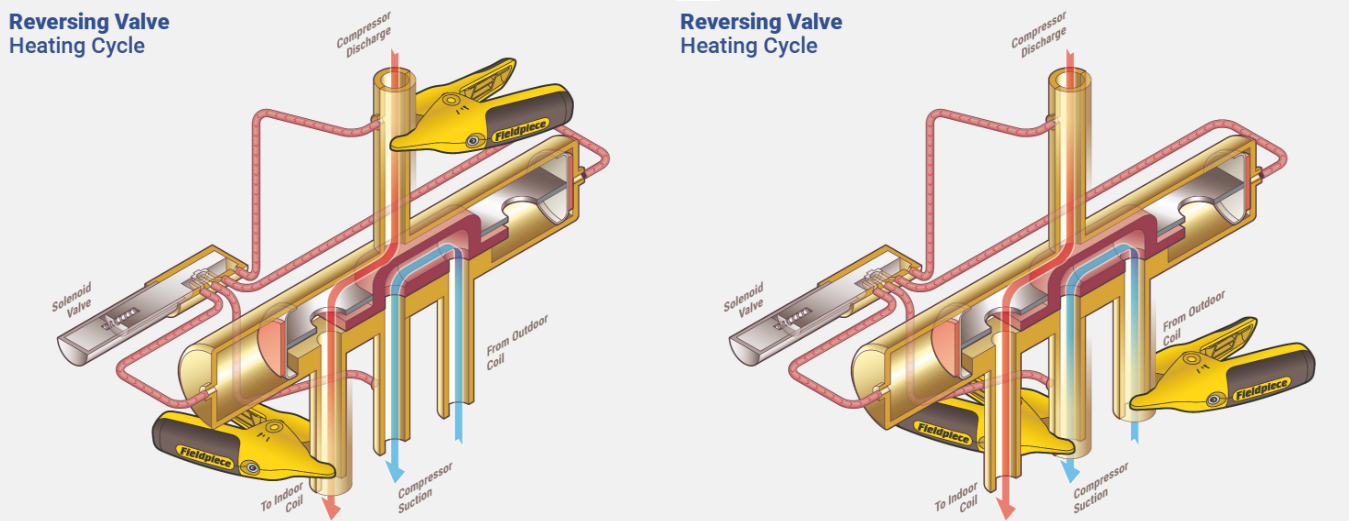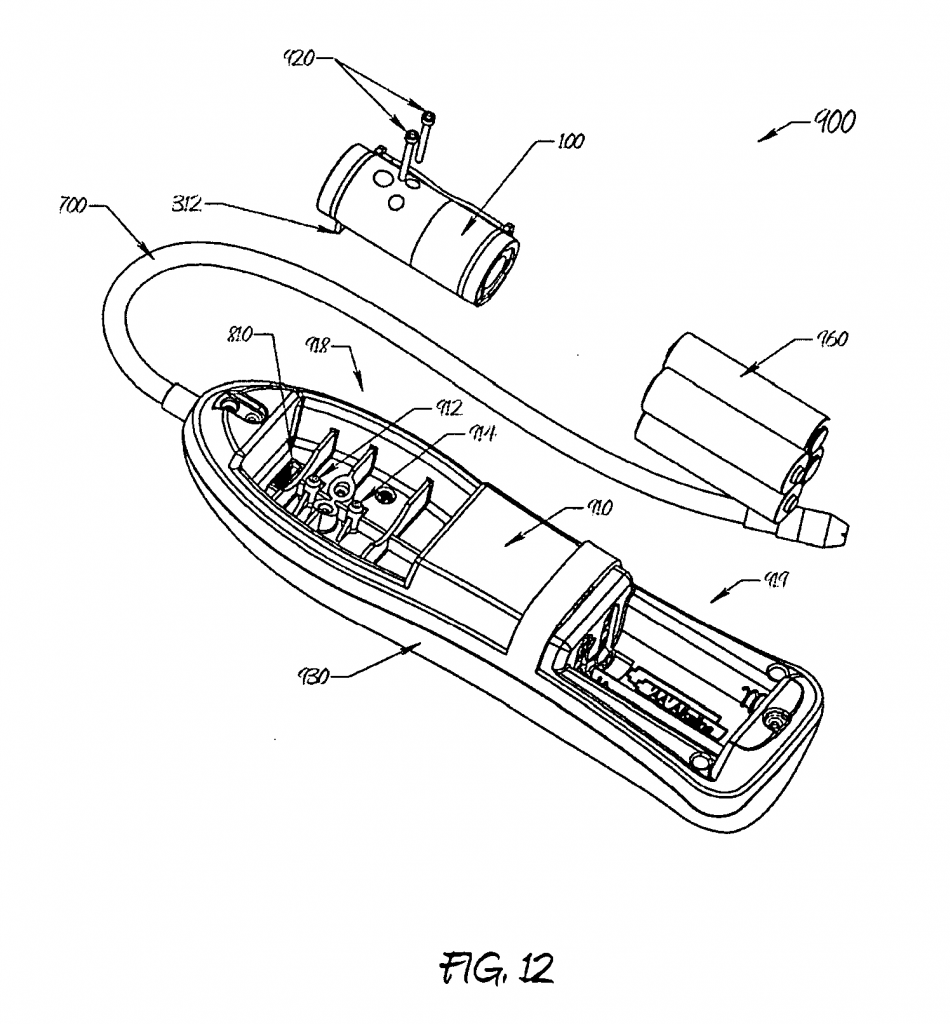Get Tech Tips
Subscribe to free tech tips.
Proper Liquid Line Drier Location

Diagram above by Carrier
It's really easy to put a liquid line drier in the proper location, but it's still more commonly installed in the WRONG location. Namely, people install it right at the condensing unit. (OK, it isn't that big of a deal, but I needed some dramatic emphasis.) Installing it at the indoor coil is good practice for two main reasons:
#1 – It better protects the metering device (expansion valve or piston) from anything that may be in the liquid between the outside and the inside
No matter what, when you first put a unit in service, you are either releasing the charge on the liquid line first or adding pressure in the liquid line. If anything is in the liquid line, it is going to hit the indoor metering device first. Putting the drier inside better protects the valve.
#2 – It won't turn into a rusty mess and start leaking after a few years
This is pretty simple, so to make this tech tip a bit more in-depth, here are some other drier best practices:
• Don't “sweat” out an old drier. When you heat an old drier, the moisture it has previously absorbed is driven out of the drier and back into the system. Cut it out instead.
• Use the right type and size. Different driers have different purposes and vary in capacity. If you have a heat pump, make sure to use a “bi-flow” drier. If you are mitigating a burnout, ensure that you are using a burnout suction drier. Ensure the drier's capacity matches the system's capacity; this will take a bit of reading. However, for residential systems, you can use 8 cu/in on small tonnage systems only. To be safe, I would generally stick with 16 cu/in liquid line driers (chart by Parker/Sporlan)

• Don't burn the paint on a drier when installing. Not only will it look ugly, but it will also be more prone to corrosion. Use a damp cloth or other heat control methods.
• Point the arrow in the correct direction. Suction driers point towards the compressor and away from the evaporator. Liquid line driers point toward the metering device and away from the condenser.
• A liquid line drier goes in the liquid line, NOT in the discharge line. The discharge line is between the compressor and the condenser. The liquid line is between the condenser and the metering device.
• Flow nitrogen while brazing and pull a proper vacuum. Both of these practices are more important than whether a drier is inside or outside.
• Remove all old line driers and install a new line drier whenever the system has been open and exposed to the atmosphere. Sometimes, the old ones were in the wrong place. If that's the case, go ahead and straight pipe them. Then, you can install your new filter/drier in the proper location.
—Bryan










Comments
1. Many condensers come with a dryer installed. Never stack dryers. This add too much restriction to a system.
2. The only issue with installing a liquid line dryer at the evaporator is a tech not verifying that that dryer is removed when a new dryer is installed.
3. Suction line dryers are typically designed to be installed and after the clean up removed because the pressure drop and trash recirculating throughout the system. If your plan is not to cut out the suction line dryer and install a pipe in place of the dryer, then install 2 in line ball valves, one before and one after the dryer and install a cartridge/core type dryer shell so the dryer core can be replaced or removed after the cleanup process is complete. Remember that the dryer shell must be evacuated each and every time it is opened whether a new dryer core is installed or not.
1. Many condensers come with a dryer installed. Never stack dryers. This add too much restriction to a system.
2. The only issue with installing a liquid line dryer at the evaporator is a tech not verifying that that dryer is removed when a new dryer is installed.
3. Suction line dryers are typically designed to be installed and after the clean up removed because the pressure drop and trash recirculating throughout the system. If your plan is not to cut out the suction line dryer and install a pipe in place of the dryer, then install 2 in line ball valves, one before and one after the dryer and install a cartridge/core type dryer shell so the dryer core can be replaced or removed after the cleanup process is complete. Remember that the dryer shell must be evacuated each and every time it is opened whether a new dryer core is installed or not.
According to the engineers “On any split system a filter drier should always be added, even if a factory-installed filter is already present.” It looks to be that you Should have one filter per evaporator and ignore the one in the condenser, as it was “to absorb remaining moisture from the manufacturing process.”
According to the engineers “On any split system a filter drier should always be added, even if a factory-installed filter is already present.” It looks to be that you Should have one filter per evaporator and ignore the one in the condenser, as it was “to absorb remaining moisture from the manufacturing process.”
Putting the drier inside above the evaporator liquid line and the drier outlet straight down any bubbles in the refrigerant will not be forced into the metering device.
Putting the drier inside above the evaporator liquid line and the drier outlet straight down any bubbles in the refrigerant will not be forced into the metering device.
I’ve seen a bunch of liquid driers on mini splits…..
I’ve seen a bunch of liquid driers on mini splits…..
This is probably a dumb question but I am a student and I am still not clear about where to put the drier/filter BECAUSE I thought that in a heat pump the condenser and the evaporator swap places. (Thus the terms: “Indoor Coil/Outdoor Coil”). Can you please clarify to me that the liquid line drier must or should go right before the Indoor Coil?
This is probably a dumb question but I am a student and I am still not clear about where to put the drier/filter BECAUSE I thought that in a heat pump the condenser and the evaporator swap places. (Thus the terms: “Indoor Coil/Outdoor Coil”). Can you please clarify to me that the liquid line drier must or should go right before the Indoor Coil?
The liquid line is always the liquid line, regardless of the direction of flow. On a heat pump be sure to use a bi-flow drier and install it in an accessable location.
The liquid line is always the liquid line, regardless of the direction of flow. On a heat pump be sure to use a bi-flow drier and install it in an accessable location.
I hAVE A DRYER ON MY AC UNIT AND THIS DRYER IS LOCATED NEAR THE CONDENSOR, WHICH WAY SHOULD THE AIR POINT? TOWARDS THE CONDENSOR OR AWAY?
I hAVE A DRYER ON MY AC UNIT AND THIS DRYER IS LOCATED NEAR THE CONDENSOR, WHICH WAY SHOULD THE AIR POINT? TOWARDS THE CONDENSOR OR AWAY?
Away from the condensing unit
Away from the condensing unit
I have a 9,000 BTU ductless Mitsubishi mini-split system that uses a ceiling cassette to house the evaporator. Both the smaller 1/4″ line and the larger 3/8″ suction line are insulated. I believe the smaller line is insulated because, unlike in a traditional split central air system, the metering device (expansion valve) is in the outside unit (rather just before the evaporator) right after the just-liquified refrigerant leaves the condenser. So, the high pressure, medium temperature (100 degrees F) “true” liquid line is short and contained within the outside unit. The smaller 1/4″ insulated line connecting the ceiling cassette to outside unit, I believe, also carries liquid, not gas, but at low temp (about 20 degrees F)–so it needs insulation–and low pressure. I do not know the name for this line. I don’t think it’s called a “suction line” that carries the refrigerant in gaseous state from the evaporator back to the outdoor compressor. My question is: it is safe to install a drier/filter in the insulated line just in front of the ceiling cassette (evaporator) even though that is not the “true” medium temp and hi pressure liquid line?
I have a 9,000 BTU ductless Mitsubishi mini-split system that uses a ceiling cassette to house the evaporator. Both the smaller 1/4″ line and the larger 3/8″ suction line are insulated. I believe the smaller line is insulated because, unlike in a traditional split central air system, the metering device (expansion valve) is in the outside unit (rather just before the evaporator) right after the just-liquified refrigerant leaves the condenser. So, the high pressure, medium temperature (100 degrees F) “true” liquid line is short and contained within the outside unit. The smaller 1/4″ insulated line connecting the ceiling cassette to outside unit, I believe, also carries liquid, not gas, but at low temp (about 20 degrees F)–so it needs insulation–and low pressure. I do not know the name for this line. I don’t think it’s called a “suction line” that carries the refrigerant in gaseous state from the evaporator back to the outdoor compressor. My question is: it is safe to install a drier/filter in the insulated line just in front of the ceiling cassette (evaporator) even though that is not the “true” medium temp and hi pressure liquid line?
I don’t Understand why Manufactures started putting little tiny LLF/ Dryer in the condensers/ The Code is as Close to the Evaporator as possible to protect the metering device So tell me how you can achieve this and not stack filters causing possible restriction in the system .
I don’t Understand why Manufactures started putting little tiny LLF/ Dryer in the condensers/ The Code is as Close to the Evaporator as possible to protect the metering device So tell me how you can achieve this and not stack filters causing possible restriction in the system .
Indulge in the visual feast that is big-juggs.com, where each image is thoroughly crafted to attract and excite. Our own collection Free tits XXX pictures showcases beautiful beauties with the particular most magnificent, jiggliest bosoms you could imagine. These temptresses are experts throughout the art involving seduction, flaunting their own ample cleavage throughout tantalizing poses that will leave you breathless. Whether they’re caressing, tasting, or merely allowing their ample assets to hold readily, our lovely ladies are here in order to cater to your every whim and transform your deepest fantasies into happy reality.
Indulge in the visual feast that is big-juggs.com, where each image is thoroughly crafted to attract and excite. Our own collection Free tits XXX pictures showcases beautiful beauties with the particular most magnificent, jiggliest bosoms you could imagine. These temptresses are experts throughout the art involving seduction, flaunting their own ample cleavage throughout tantalizing poses that will leave you breathless. Whether they’re caressing, tasting, or merely allowing their ample assets to hold readily, our lovely ladies are here in order to cater to your every whim and transform your deepest fantasies into happy reality.
To leave a comment, you need to log in.
Log In